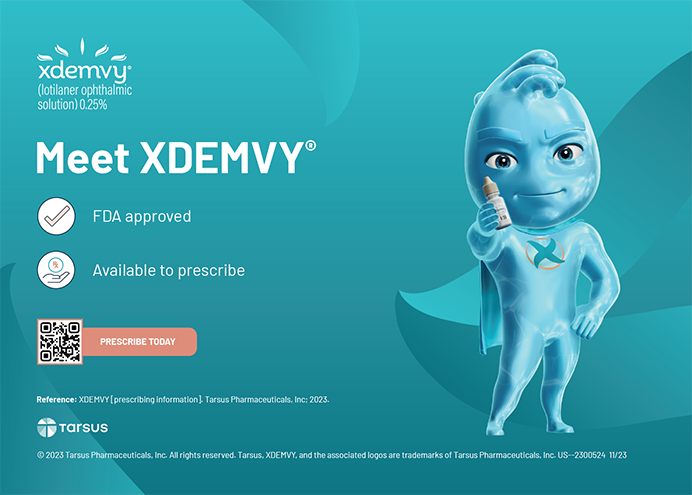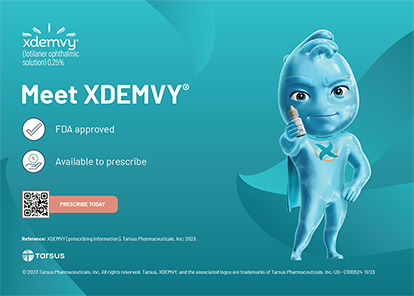Unlike the evaluation of human vision, veterinary ophthalmologists have few options to accurately assess the endpoint of visual function (Figure 1). We examine pupillary light responses and watch our patients find their way under various lighting conditions. Electroretinography, visual evoked potentials, and retinoscopy provide some objective parameters of function. Without verbal confirmation, however, we work with many of the limitations faced by pediatric ophthalmologists. In our daily clinical practice, we extrapolate perceived function from our interpretation of structural changes in patients' eyes. First, of course, we must have a clear understanding of "normal" dogs' and cats' vision and of how they react to visual stimuli.
Vision is, of course, essential for successful navigation to avoid obstacles, but a blind dog in a familiar environment may seem to have nearly normal vision. I am often presented with a dog for which the owners report an acute onset of blindness. My examination of the fundus in these cases, however, reveals long-standing retinal degeneration, and further questioning reveals that the owners recently moved or rearranged their furniture. As a result, their pet, which has been blind for months, is now exhibiting acute behavioral evidence of impairment. Dogs successfully use their senses of smell and hearing—sensitive in ways that humans can only imagine—to help them "picture" their environment.
This article describes my experience as a veterinary ophthalmologist and the skills that I have gained by dealing with a patient population in which it is usually challenging to assess visual acuity or the presence of visual disturbances.
TOOLS FOR ASSESSING CANINE/FELINE VISION
The complete visual experience combines field of view; perception of light, motion, and color; and acuity. Variations among species exist in all of these elements. The description here will be limited to the current knowledge of vision in small domestic species, dogs and cats.1 We assess several areas when evaluating the vision of these animals.
Field of View
Field of view varies greatly among different breeds of dogs. Brachycephalic breeds (pug, Boston terrier) with a short nose have more binocular overlap. Mesocephalic and dolichocephalic dogs have a long nose and laterally placed eyes with a small binocular field. Most dogs have a 240° visual field of which 30° to 60° are binocular, compared with a 200° visual field of which 140° are binocular for cats and humans. Stereopsis and depth perception are affected by the small binocular field.
Light
Dogs and cats have greater dim-light sensitivity than humans. For example, cats' minimal threshold of light for functional vision is approximately sixfold less than for humans.2 Several anatomical differences account for this enhanced light sensitivity. One reason is that the rods are the predominant type of photoreceptor in dogs' and cats' eyes. Another is that canine rhodopsin has a higher peak sensitivity than human rhodopsin and requires more than 1 hour to fully regenerate after exposure to bright light.
A modification of the choroid, the tapetum lucidum, located in the superior portion of the fundus, likely functions to enhance the capture of photons. It is this reflective layer that gives dogs and cats their characteristically shining eyes when caught by a car's headlights. The scattering of light by the tapetum, however, may reduce acuity. The tapetum in dogs consists of nine to 20 layers of dense cells concentrated in zinc and cysteine. Ophthalmoscopically, the reflective color of the tapetum in dogs ranges from blue-green to gold or yellow. This variation in color occurs as a result of the physical characteristics of the cells rather than their chemical composition. Tapetal riboflavin is thought to selectively absorb short-wavelength light and shift it to a longer wavelength to coincide with the maximal sensitivity of rhodopsin.3
Motion
Dogs and cats appear to be sensitized to react primarily to moving objects, as would be expected of a predatory species. Many dogs and cats ignore stationary objects but reflexively chase them if they move. Dogs' large field of peripheral vision, in combination with their rod-rich retinae, makes them well suited to the detection of movement (prey) in dim light. Flicker fusion in dogs and cats is similar to that of humans in low light but is somewhat higher (70 to 80 Hz) than in humans (50 to 60 Hz) under brighter stimuli.4,5
Color
The retina of dogs and cats consists nearly exclusively of rods. It lacks both a macula and a fovea, resulting in a poorly defined visual streak within the tapetal portion of the retina. Cones represent fewer than 10 of the photoreceptors, and they are nearly evenly distributed. The limited numbers of cones are of two types, yielding dichromatic vision with a sensitivity to violet (429 nm) and yellow-green (555 nm).6 Wavelengths ranging from 500 to 620 nm (seen as green, yellow, and red by humans) would all appear as yellow to dogs7 (Figure 2). Thus, it is likely that guide dogs for the blind interpret traffic lights based on the position of the light rather than by differentiating red from green.6
Acuity
Surveys of the refractive state of dogs reveal that most are nearly emmetropic.8 One survey of 240 normal dogs revealed that some breeds (German shepherd, rottweiler) had a higher incidence of myopia, but German shepherd guide dogs were likely to be significantly less myopic. This finding has led to speculation that the screening of dogs for use as guides may eliminate those for which vision-dependent behavior was considered to be suboptimal.8 Astigmatism is not common in dogs.1 Accommodation occurs to a much smaller degree in this species compared with humans and is probably limited to between 2.00 and 4.00 D. Aphakic dogs are hyperopic by 14.00 D, and the implantation of a 41.00 D IOL is required to restore emmetropia.9
A high ratio of photoreceptors to ganglion cells is one of the factors that enhance canine vision in dim light at the price of acuity. The optic nerve of the dog and cat has approximately 165,000 nerve fibers compared with 1.2 million in humans.10,11
FUNCTIONALITY OF VISION
Dogs and cats have a visual system that is well suited to their evolutionary niche as a predatory species: they are able to hunt under a variety of lighting conditions, and they are strongly stimulated by movement without needing fine motor skills or a high degree of acuity or accommodation. Their human companions are highly sensitized to a perception of reduced vision, commonly considered the most feared human handicap. We fail to recognize the importance of dogs' and cats' other, more highly developed senses of smell and hearing, simply because they are less refined and less essential to us. Functional vision, however, is still a significant factor in these animals' quality of life. Sharp vision is a "job requirement" for dogs that function in service capacities or as performance animals. I have examined many guide dogs for the blind and identified impaired vision as a cause for previously unexplained problems in their performance.
One of the rewards of the veterinary ophthalmologist is that many of the conditions with which we are presented have a positive outcome that owners and patients deeply appreciate. In spite of the limitations we have in objectively assessing our patients' vision, the subjective evidence of improved vision is both gratifying and unmistakable.
Cynthia Cook, DVM, PhD, Dip. ACVO, is the founder of Veterinary Vision, which has offices in San Carlos and San Francisco, California. She is active with lecturing, research, and consulting activities in academia and industry. Dr. Cook may be reached at (650) 551-1115; by e-mail at cscook@veterinaryvision.com; or on the Web at www.veterinaryvision.com.


